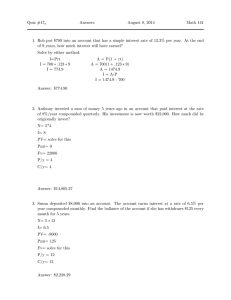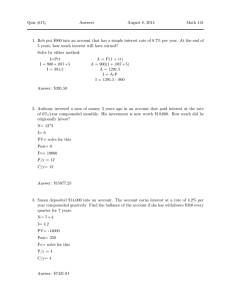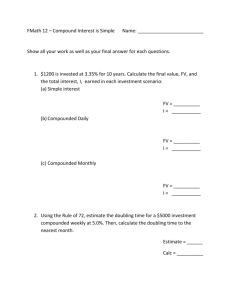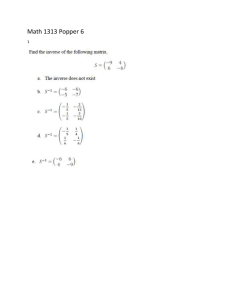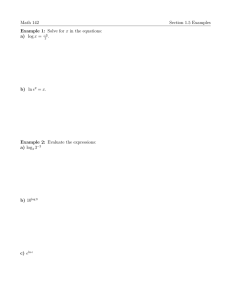Page 1 Section 5.1: Simple Interest and Compound Interest
advertisement
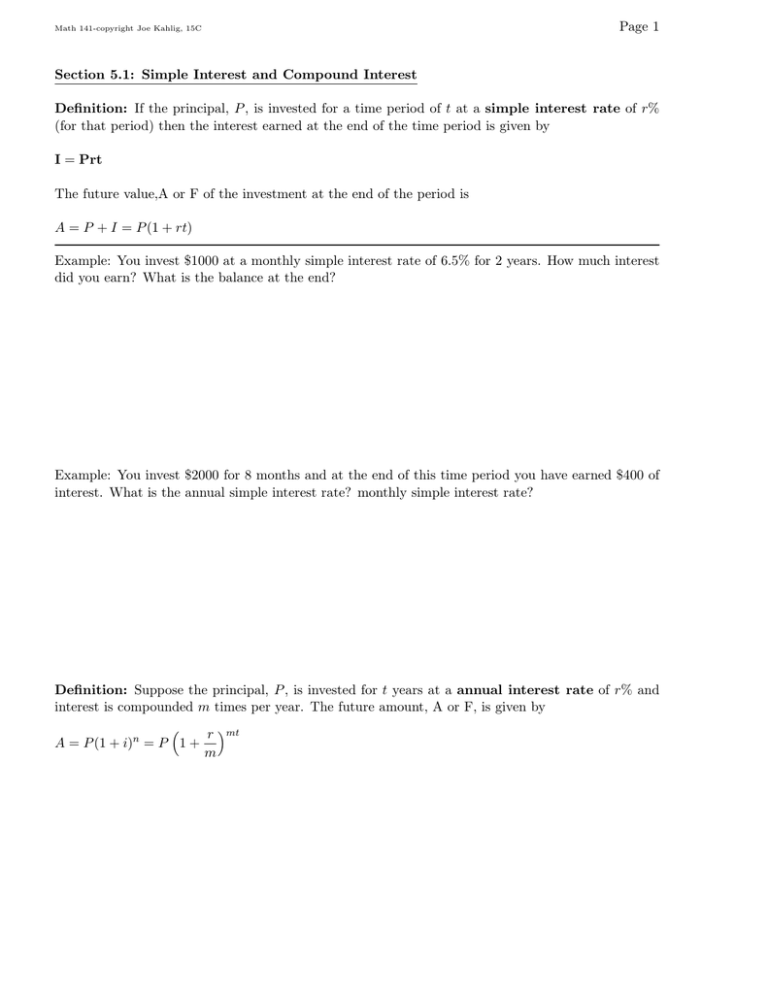
Math 141-copyright Joe Kahlig, 15C Page 1 Section 5.1: Simple Interest and Compound Interest Definition: If the principal, P , is invested for a time period of t at a simple interest rate of r% (for that period) then the interest earned at the end of the time period is given by I = Prt The future value,A or F of the investment at the end of the period is A = P + I = P (1 + rt) Example: You invest $1000 at a monthly simple interest rate of 6.5% for 2 years. How much interest did you earn? What is the balance at the end? Example: You invest $2000 for 8 months and at the end of this time period you have earned $400 of interest. What is the annual simple interest rate? monthly simple interest rate? Definition: Suppose the principal, P , is invested for t years at a annual interest rate of r% and interest is compounded m times per year. The future amount, A or F, is given by r mt A = P (1 + i)n = P 1 + m Math 141-copyright Joe Kahlig, 15C Page 2 Example: Find the balance of the account if you invest $600 for 7 years at a nominal rate of 5% compounded semiannually. Example: You want $2000 in an account at the end of 3 years. If the account gets a nominal rate of 5.75% compounded quarterly, how much do you start the account with? Example: You have the choice of investing money in one of two different accounts. The first account is at Bank A and has a rate of 6.51% compounded semiannually. The second account is at Bank B and has a rate of 6.08% compounded daily. Which account is the better deal? Definition: For compound interest, the effective yield, ref f , is given by Example: You invest $2000 in an account that pays interest compounded monthly. What interest rate do you need to have a balance of $5,000 at the end of 3 years. Math 141-copyright Joe Kahlig, 15C Page 3 TVM Solver The TVM solver that is built function on the TI-83/84 calculators. If you are using the old TI-83 press 2nd x-1 and then press ENTER , otherwise press the APPS and the select the Finance application and press enter. Here are the variables that are used in the TVM Solver. N= I%= PV= PMT= FV= P/Y = C/Y = m ∗ t which is the total number of periods(compoundings) for the life of the account. The interest rate per year as a percentage. The present value(starting value) of the account. This is the payment that is made each period. The future value(end value) of the account. The number of payments per year. The number of compoundings per year. For this class, P/Y and C/Y are equal and PMT:END BEGIN should be set to END.
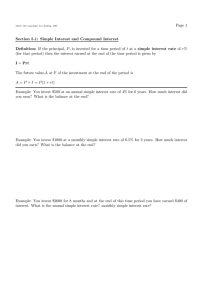
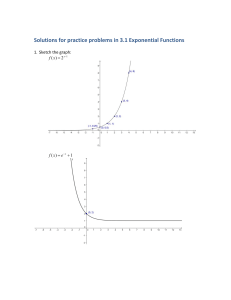
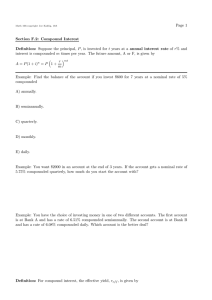

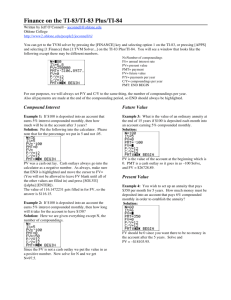
![Practice Quiz Compound Interest [with answers]](http://s3.studylib.net/store/data/008331665_1-e5f9ad7c540d78db3115f167e25be91a-300x300.png)
